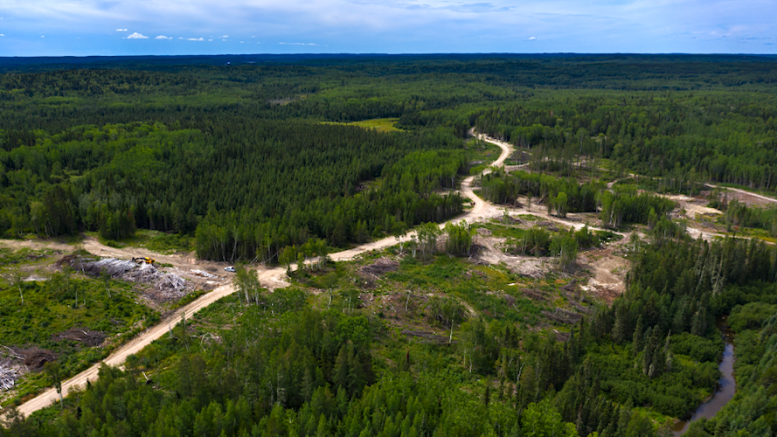Kinross Gold (TSX: K; NYSE: KGC) says the first mineral resource for its billion-dollar Great Bear project in northwest Ontario shows potential to be a world class asset.
The open-pit indicated mineral resource shows 33.1 million tonnes grading 2.6 grams gold per tonne for 2.7 million oz. contained metal, Kinross said Monday in a news release. The total open-pit and underground inferred resource is 20 million tonnes grading 3.5 grams gold for 2.3 million oz. contained metal.
Toronto-based Kinross bought the property about 500 km northwest of Thunder Bay, Ont. and 25 km southeast of Red Lake last year via a takeover of Great Bear Resources for $1.8 billion in cash and shares. It has drilled more than 250 km in exploration holes on top of some 300 km done by Great Bear and others at the project, which was previously known as Dixie. The results show the LP Fault zone is expected to host a long-life, high-grade, open-pit and underground mine, Kinross said.
“The drilling results have continued to prove out our thesis that the project could host a multi-decade high grade open pit and underground mining complex,” J. Paul Rollinson, Kinross president and chief executive officer, told a conference call on Monday.
“We have made excellent progress on drilling out this world class deposit and releasing a substantial initial resource.”
The project may cost US$1 billion to develop in capital costs, in line with similar projects in the Canadian north, with an all-in sustaining cost of “well below” US$1,000 per oz., Rollinson said.
The company plans 180,000 metres of drilling this year to define deep mineralization up to 1 km down, explore along strike and add to the resource totals. A preliminary economic assessment is due next year, it said. Kinross is targeting first gold in 2029, although it said production could start in 2028 if permits are obtained rapidly.
Half a million ounces
Kinross is considering an industry standard gravity and carbon-in-leach process that site testing has shown can recover 95% of the gold and could produce 450,000 oz. to 500,000 oz. per year. Almost half would be recovered by gravity, it said.
BMO Capital Markets said Kinross’ operations of the Tasiast mine in Mauritania and Paracatu in Brazil bode well for Great Bear’s development.
“We continue to expect that this will be a valuable project as it moves closer to development,” mining analyst Jackie Przybylowski wrote in a note on Monday. “We continue to see Kinross as well-valued in today’s high gold price environment, with Russia risk eliminated, and in light of strong existing operations.”
The resource estimate was based on a gold price of US$1,700 per oz. with cut-off grade of 0.5 gram gold per tonne. However, the size of the pit was determined using a gold price of US$1,400 per ounce to get a higher grade average, Kinross said.
The estimate used drill results to a depth of about 500 metres, while recent drilling has intersected gold mineralization at a depth of almost 1.3 km, Kinross said. Drill hole 579 intersected 25 metres grading 15.5 grams gold in this deep area, the company said.
One open-pit scenario shows an overall strip ratio of seven to one which is expected to be significantly lower after revisions are made to the design, the company said. More studies need to be done, but a mill handling 10,000 tonnes of ore per day looks like it will be adequate because of the deposit’s high grades, Rollinson said.
There could be 10 years of open-pit stockpile created as the mine eventually transitions from open pit to underground, the company said. The underground zone on the LP deposit is seen as a high-tonnage operation that could process 6,000 to 8,000 tonnes a day, it said. The underground operation could run for longer than a decade, it said.
Kinross compares Great Bear’s geology and deposit structure to Barrick Gold’s (TSX: ABX; NYSE: GOLD) Hemlo mine 300 km east of Thunder Bay, which has produced more than 21 million oz. over a lifespan longer than 30 years.
“We are extremely pleased with the initial resource estimate and believe the best is still to come,” Rollinson told the call.


Note the typo as it appears to be 33 million tonnes open pitable not 3.3 million tonnes as stated in the article.
Thank you, we have corrected this!